Did you know that roasting vegetables can transform them into a mouthwatering and nutritious dish that even the pickiest eaters will love? It’s true! With the right techniques and flavor combinations, you can create the best roasted vegetables that are flavorful, crispy, and packed with nutrients.
Whether you’re looking for a delicious roasted veggie side dish, healthy vegetable recipes, or an easy roasted vegetable recipe, this ultimate guide has got you covered. I will share foolproof recipes, tips, and tricks to help you master the art of roasting vegetables, creating a flavorful roasted vegetable medley that will take your meals to the next level.
Key Takeaways:
- Roasting vegetables brings out their natural sweetness and adds a caramelized, crispy texture.
- Roasted vegetables retain more nutrients compared to boiling or steaming.
- Cut vegetables into similar sizes, drizzle with oil, and season with herbs and spices for perfectly roasted vegetables.
- Experiment with different flavor combinations to create unique and delicious roasted vegetable dishes.
- Roasted vegetables are versatile and can be used in a variety of dishes, including salads, pasta, and sandwiches.
Why Roasted Vegetables Are a Must-Try
Roasting vegetables is an excellent cooking method that offers numerous benefits and reasons to give it a try. From enhancing the flavors to retaining nutrients, there are several advantages of roasting veggies.
“Roasting vegetables brings out the natural sweetness and adds a caramelized, crispy texture.”
When vegetables are roasted, the heat causes their natural sugars to caramelize, resulting in a deliciously sweet and savory flavor. Additionally, the roasting process creates a satisfying crunch that elevates the texture of the vegetables.
“Roasting vegetables enhances the flavors and makes them more appealing, even to picky eaters.”
Roasting intensifies the flavors of vegetables, making them more robust and satisfying. This makes roasted vegetables a great option for picky eaters who may not be fond of raw or steamed veggies. The combination of enhanced flavors and irresistible textures can entice even the most reluctant vegetable eaters.
“Roasted vegetables retain more nutrients compared to boiling or steaming.”
Unlike boiling or steaming, which can lead to nutrient loss, roasting vegetables helps retain their valuable vitamins and minerals. The dry heat of the oven allows the vegetables to maintain their nutritional content, ensuring that you get the most out of every bite.
“Roasting vegetables is a great way to use up leftover veggies and reduce food waste.”
Roasting is an excellent way to repurpose leftover vegetables from previous meals. You can simply toss them in the oven and transform them into a delightful side dish or incorporate them into other recipes. This not only helps minimize food waste but also adds depth and richness to your meals.
As you can see, there are numerous reasons why roasted vegetables are a must-try. From the enticing flavors to the nutritional advantages, roasting veggies is a versatile and delicious cooking technique that can elevate your meals.
Essential Tips for Perfectly Roasted Vegetables
To achieve perfectly roasted vegetables every time, there are a few key tips that I swear by. Follow these tips for crispy and delicious roasted veggies that will impress your family and friends!
Cutting and Preparing the Vegetables
- Make sure to cut the vegetables into similar sizes to ensure even cooking. This will ensure that all the veggies roast at the same rate.
- For root vegetables like potatoes, beets, and carrots, cut them into 1-inch cubes or wedges.
- Cruciferous vegetables like broccoli and cauliflower should be broken into florets of similar size.
- If using softer vegetables like zucchini or bell peppers, slice them evenly.
Coating and Seasoning
- Drizzle the vegetables generously with oil to prevent them from drying out in the oven. I like to use olive oil for a delicious flavor.
- Season the vegetables with herbs, spices, and salt to enhance their flavor. Some popular choices include rosemary, thyme, paprika, and garlic powder.
- Don’t forget to toss the vegetables well, ensuring that they are evenly coated with oil and seasonings.
Proper Baking Sheet Placement
Spread the seasoned vegetables in a single layer on a baking sheet to allow proper air circulation. This will ensure that they roast evenly and become crispy. Avoid overcrowding the baking sheet, as this can lead to steaming instead of roasting.
Baking Temperature and Time
Roast the vegetables at the right temperature to achieve the perfect texture. Preheat your oven to 425°F (220°C) for a good balance between caramelization and cooking time. Adjust the cooking time based on the types of vegetables you’re roasting. Generally, root vegetables will take longer (around 40-45 minutes), while softer vegetables will roast faster (around 20-25 minutes).
Keep a close eye on the vegetables as they roast, and check for the desired doneness by poking them with a fork. The veggies should be tender and golden brown.
Remember, practice makes perfect! Don’t be afraid to experiment with different vegetables, oil and seasoning combinations, and cooking times to find your perfect roast. Enjoy your journey to perfectly roasted vegetables!
Flavor Combinations for Roasted Vegetables
One of the best things about roasted vegetables is the endless flavor possibilities. By combining different herbs, spices, and seasonings, you can create unique and delicious flavor profiles. Experimenting with various flavor combinations can take your roasted vegetables to the next level and make them a standout side dish. Here are some mouthwatering ideas to inspire your culinary adventures:
Schmaltzy Sweet Potatoes with Chicken Fat
For a savory twist on sweet potatoes, try roasting them with chicken fat. The rich and flavorful chicken fat adds an indulgent depth of flavor to the naturally sweet potatoes. It’s a perfect combination that will have your taste buds singing! You can also sprinkle some smoked paprika, garlic powder, and a pinch of cayenne pepper for an extra burst of spice.
Sweet and Sour Brussels Sprouts with Coconut Oil and Fish Sauce
Give Brussels sprouts a tangy and umami kick by combining coconut oil and fish sauce. The coconut oil adds a hint of sweetness, while the fish sauce provides a savory and slightly briny flavor. Toss in a drizzle of honey and a squeeze of lime juice to balance the flavors and create a truly irresistible dish.
Savory Butternut Squash and Sausage with Leeks and Sage
Indulge in the comforting combination of roasted butternut squash, savory sausage, fragrant leeks, and earthy sage. The sweetness of the butternut squash pairs perfectly with the savory flavors of the sausage, while the leeks and sage add depth and freshness to the dish. This hearty combination is sure to satisfy your taste buds.
Remember, these flavor combinations are just a starting point. Feel free to get creative and experiment with different ingredients to discover your own favorite flavor pairings. Whether you prefer sweet and spicy, savory and tangy, or a combination of flavors, the possibilities are endless when it comes to roasted vegetables.
| Vegetable | Recommended Flavor Pairings |
|---|---|
| Carrots | Maple syrup, ginger, and thyme |
| Broccoli | Garlic, lemon zest, and Parmesan cheese |
| Cauliflower | Turmeric, cumin, and coriander |
| Zucchini | Basil, lemon juice, and feta cheese |
| Mushrooms | Balsamic vinegar, rosemary, and garlic |
How to Roast Different Types of Vegetables
Roasting vegetables is a versatile and delicious cooking method that brings out their natural flavors and creates a satisfying crispy texture. However, different types of vegetables require different roasting times and techniques to achieve the perfect results. Here are some guidelines to help you roast different kinds of veggies:
Round root vegetables (beets, sweet potatoes)
For round root vegetables like beets and sweet potatoes, it’s best to cut them into smaller, uniform pieces before roasting. This ensures that they cook evenly throughout and don’t become overly soft or charred on the outside while remaining underdone on the inside.
Long root vegetables (carrots, parsnips)
Long root vegetables such as carrots and parsnips should be sliced in half lengthwise before cutting them into 1 1/2-inch slices. This technique allows for even cooking and helps to retain their natural sweetness and tender texture.
Cruciferous vegetables (Brussels sprouts, cauliflower)
Cruciferous vegetables like Brussels sprouts and cauliflower should be cut in half or into small rectangular pieces. This not only helps with even cooking but also allows the edges to caramelize and become deliciously crispy.
Soft vegetables (green beans, asparagus)
Soft and tender vegetables like green beans and asparagus require less time in the oven and can be roasted as they are. Simply wash and trim them, and they will roast to perfection, becoming slightly wrinkled and caramelized while still maintaining their vibrant color and crunch.
Experiment with different vegetables and flavor combinations to create your own unique roasted vegetable medleys. Just remember to adjust the roasting times and techniques based on the specific characteristics of each vegetable. Happy roasting!
Time-Saving Tips for Roasting Vegetables
If you’re short on time, fret not! I have some time-saving techniques for roasting veggies that will help you whip up quick and easy roasted vegetable recipes without compromising on flavor. These shortcuts for roasting vegetables will save you precious minutes in the kitchen, making it easier to enjoy delicious and nutritious meals.
One of the easiest time-saving tips is to consider purchasing pre-chopped vegetables from your local grocery store. This eliminates the need for washing, peeling, and cutting, cutting down on your prep time significantly. Just grab a bag of mixed veggies, toss them with oil and seasonings, and pop them in the oven for a hassle-free dinner.
Another time-saving technique is to skip peeling certain vegetables like potatoes and carrots if they don’t require it. Not only does this save you time, but it also retains the nutrients and adds a rustic touch to your roasted vegetable recipes.
If you have some spare time during the week, consider chopping your vegetables in advance and storing them in the fridge. This way, when it’s time to cook, you can simply grab the pre-chopped veggies and start roasting. It’s a great way to stay organized and ensure that you always have quick and easy roasted vegetable options on hand.
When it comes to cooking time, using a higher oven temperature of 400 degrees Fahrenheit can help expedite the roasting process. The higher heat helps cook the vegetables faster, resulting in crispy and flavorful roasted veggies in no time.
Avoid overcrowding your baking sheet when roasting vegetables. It’s important to give the veggies enough space to roast properly and ensure proper air circulation. This allows for faster cooking and a more consistent texture across all your roasted veggies.
Now that we’ve covered these time-saving tips, let’s take a look at a handy table summarizing the techniques:
| Time-Saving Techniques for Roasting Veggies |
|---|
| Purchase pre-chopped vegetables |
| Skip peeling certain vegetables |
| Chop vegetables in advance and store in the fridge |
| Use a high oven temperature of 400 degrees Fahrenheit |
| Avoid overcrowding the baking sheet |
Implementing these time-saving techniques will help you streamline your cooking process and have delicious roasted vegetables on the table in no time! With these shortcuts for roasting vegetables, you can enjoy flavorful and nutritious meals without spending hours in the kitchen.
So, why wait? Try out these time-saving tips and explore the world of quick and easy roasted vegetable recipes!
Creative Ways to Flavor Roasted Vegetables
In addition to traditional herbs and spices, there are numerous creative ways to flavor your roasted vegetables. By thinking outside the box, you can elevate your roasted veggies to a whole new level. Let me share some unique and unconventional seasoning ideas to inspire your taste buds!
1. Cheesy Delights
Try adding a sprinkle of different types of cheese to your roasted vegetables for a deliciously cheesy twist. Cheddar, Parmesan, or even crumbled feta can add a creamy and tangy flavor that pairs perfectly with the caramelized goodness of roasted veggies.
2. Tangy Citrus Zest
Add a burst of brightness to your roasted vegetables by experimenting with citrus slices or juices. The tangy flavors of lemon, lime, or orange can complement the earthiness of the vegetables and create a refreshing and zesty combination.
3. Spicy Kick
If you crave some heat, try sprinkling curry powder or chili flakes over your roasted vegetables. These spices will infuse your veggies with a spicy kick, adding depth and complexity to every bite.
4. Mediterranean Twist
For a taste of the Mediterranean, drizzle your roasted vegetables with pesto or balsamic vinegar. These ingredients will lend a rich and aromatic flavor, taking your veggies on a culinary journey to the Mediterranean shores.
Remember, these are just a few examples of the many creative ways you can flavor roasted vegetables. Don’t be afraid to experiment and discover your own unique combinations. Let your taste buds guide you, and enjoy the endless possibilities!
| Seasoning Idea | Description |
|---|---|
| Cheesy Delights | Add a sprinkle of different types of cheese (Cheddar, Parmesan, or feta) for a creamy and tangy twist. |
| Tangy Citrus Zest | Experiment with citrus slices or juices (lemon, lime, or orange) for a burst of brightness. |
| Spicy Kick | Sprinkle curry powder or chili flakes for some heat and a touch of spice. |
| Mediterranean Twist | Drizzle with pesto or balsamic vinegar for a rich and aromatic flavor. |
Best Ways to Use Roasted Vegetables
Roasted vegetables are incredibly versatile and can be used in a variety of delicious dishes. Not only do they make a mouthwatering side dish on their own, but they can also be incorporated into salads, pasta dishes, stir-fries, sandwiches, and more. The rich flavors and textures of roasted vegetables can add depth and excitement to your meals. Here are some creative ways to incorporate roasted vegetables into your favorite dishes:
1. Salads:
Elevate your salads by adding a generous portion of roasted vegetables. The natural sweetness and intense flavors will take your salad to the next level. Mix them with leafy greens, protein such as grilled chicken or tofu, and your favorite dressing for a wholesome and satisfying meal.
2. Pasta Dishes:
Roasted vegetables pair beautifully with pasta, creating a delicious and filling combination. Toss them with cooked pasta, olive oil, garlic, and grated Parmesan cheese for a simple yet flavorful dish. You can also add some roasted cherry tomatoes for an extra burst of sweetness.
3. Stir-Fries:
Give your stir-fries a unique twist by incorporating roasted vegetables. Their caramelized flavors will add depth and complexity to the dish. Stir-fry them with your choice of protein, such as shrimp or tofu, and your favorite stir-fry sauce for a quick and tasty meal.
4. Sandwiches:
Upgrade your sandwiches with roasted vegetables for added flavor and texture. Layer them with your favorite ingredients like cheese, avocado, and fresh herbs for a tasty and satisfying meal. The combination of roasted vegetables and other fillings will create a mouthwatering sandwich experience.
5. Breakfast Dishes:
Start your day with a nutritious and flavorful breakfast by incorporating roasted vegetables. Add them to omelettes or scrambled eggs for a delicious and filling morning meal. The combination of eggs and roasted vegetables will give you a satisfying start to your day.
6. Freezing and Meal Prep:
If you want to enjoy the flavors of roasted vegetables at a later time, you can freeze them for future use. Simply store them in airtight containers or freezer bags and label them with the date. When you’re ready to enjoy them, thaw and reheat in the oven or microwave. This makes meal prep a breeze and allows you to enjoy roasted vegetables all year round.
7. Get Creative:
Don’t be afraid to get creative and experiment with different dishes using roasted vegetables. Whether you use them as a topping for pizzas, a filling for quesadillas, or a component in grain bowls, the possibilities are endless. Let your imagination run wild and discover new and exciting ways to enjoy the flavors and textures of roasted vegetables.
Remember, incorporating roasted vegetables into your meals not only adds incredible flavors but also boosts the nutritional value of your dishes. So, don’t hesitate to explore different ways to incorporate these delicious veggies into your favorite recipes.
| Recipes with Roasted Vegetables | Using Roasted Veggies in Meals | Incorporating Roasted Vegetables into Dishes |
|---|---|---|
| Roasted Vegetable Quinoa Salad | Roasted Vegetable Pasta | Roasted Vegetable Stuffed Peppers |
| Roasted Vegetable Wrap | Roasted Vegetable Stir-Fry | Roasted Vegetable Pizza |
| Roasted Vegetable Frittata | Roasted Vegetable Grain Bowl | Roasted Vegetable Quesadillas |
Storing and Reheating Roasted Vegetables
If you have leftover roasted vegetables, it’s important to store them properly to maintain their freshness. Here are some tips on how to store and reheat your roasted veggies.
Storing Roasted Vegetables
To store roasted vegetables, place them in an airtight container and refrigerate for up to 5 days. This will help prevent any moisture or odors from seeping in, keeping your veggies fresh and flavorful.
Tip: If you have different types of roasted vegetables, consider storing them separately to maintain their individual flavors and textures.
Reheating Tips for Roasted Vegetables
When it comes to reheating roasted vegetables, there are a few options you can choose from:
- Oven: Preheat your oven to 350 degrees Fahrenheit and spread the roasted vegetables in a single layer on a baking sheet. Warm them in the oven for about 10-15 minutes until they are heated through.
- Microwave: Place the desired amount of roasted vegetables in a microwave-safe dish. Heat them on high for 1-2 minutes, stirring halfway through, until they are hot.
Tip: To prevent your reheated roasted vegetables from becoming too dry, you can drizzle a little olive oil or vegetable broth over them before reheating.
Freezing Roasted Vegetables
If you have more roasted vegetables than you can consume within a few days, freezing them is a great option to extend their shelf life. Here’s how:
- Allow the roasted vegetables to cool completely before freezing.
- Transfer them to a freezer-safe container or freezer bags, removing as much air as possible to prevent freezer burn.
- Label the containers or bags with the date and contents.
- Store the roasted vegetables in the freezer for up to 3 months.
Note that when you reheat frozen roasted vegetables, they may become slightly soggy due to the moisture released during freezing. However, they will still maintain their great flavor.
Now that you know how to store, reheat, and freeze your roasted vegetables, you can enjoy their deliciousness any time you want. Whether as a convenient side dish or a flavorful addition to your favorite recipes, roasted veggies are a versatile and nutritious option for any meal.
Conclusion
Roasted vegetables are a delicious and nutritious addition to any meal. With the right techniques and flavor combinations, you can create the best roasted vegetables that will impress your family and guests.
Remember to experiment with different vegetables, seasonings, and cooking times to find your favorite combinations. Whether you enjoy them as a side dish or incorporate them into various recipes, roasted vegetables are a versatile and tasty option.
Get creative in the kitchen and elevate your meals with the flavors and textures of perfectly roasted vegetables.

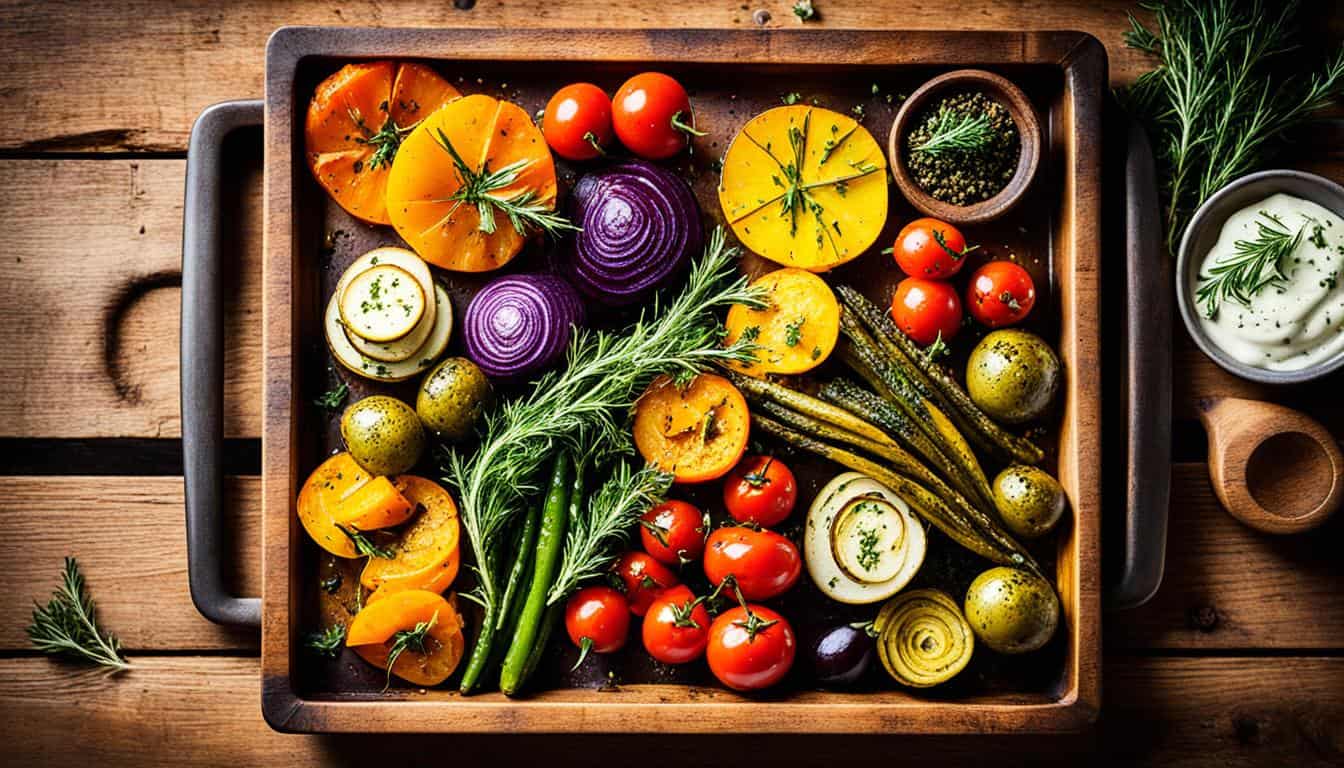
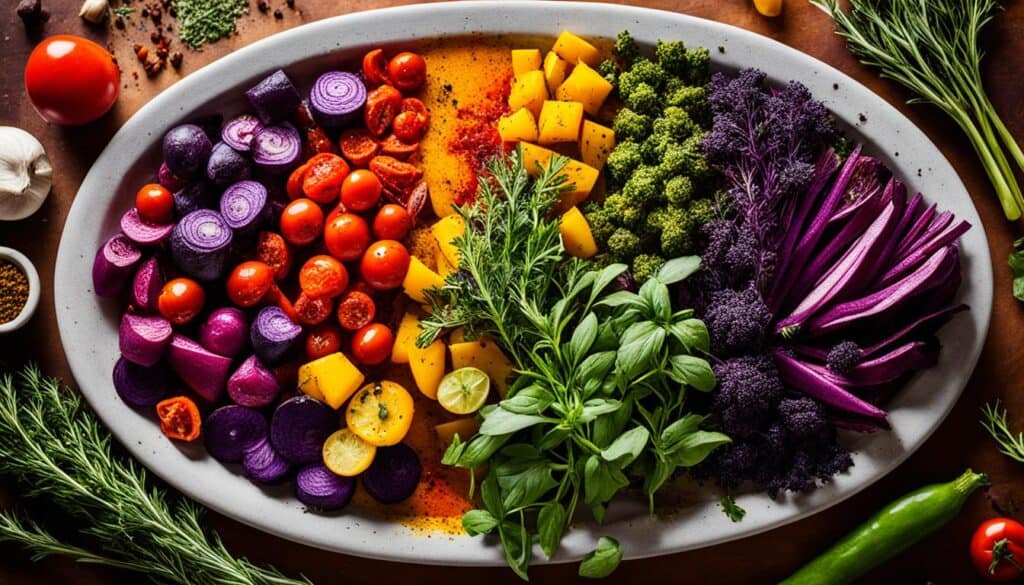
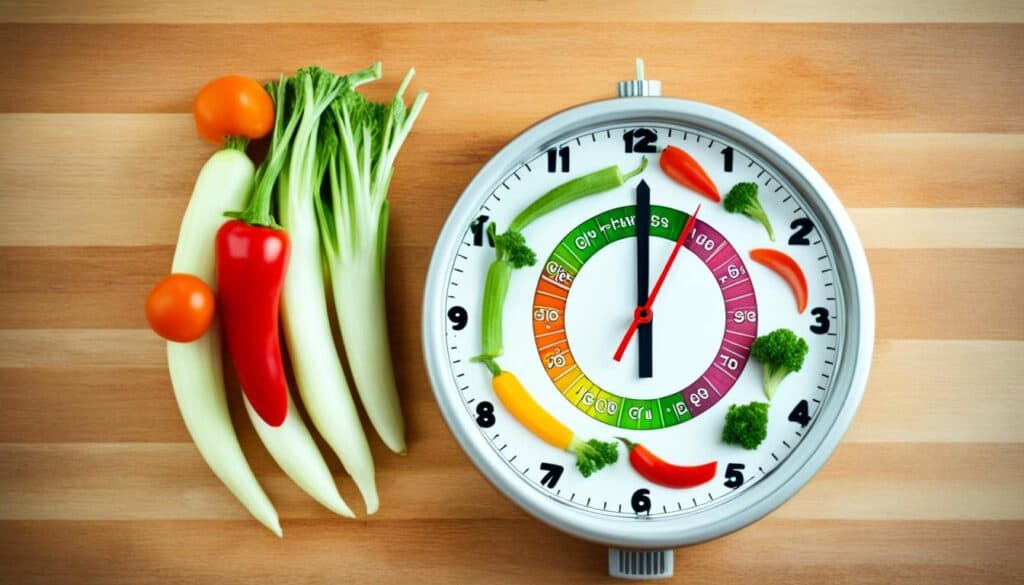
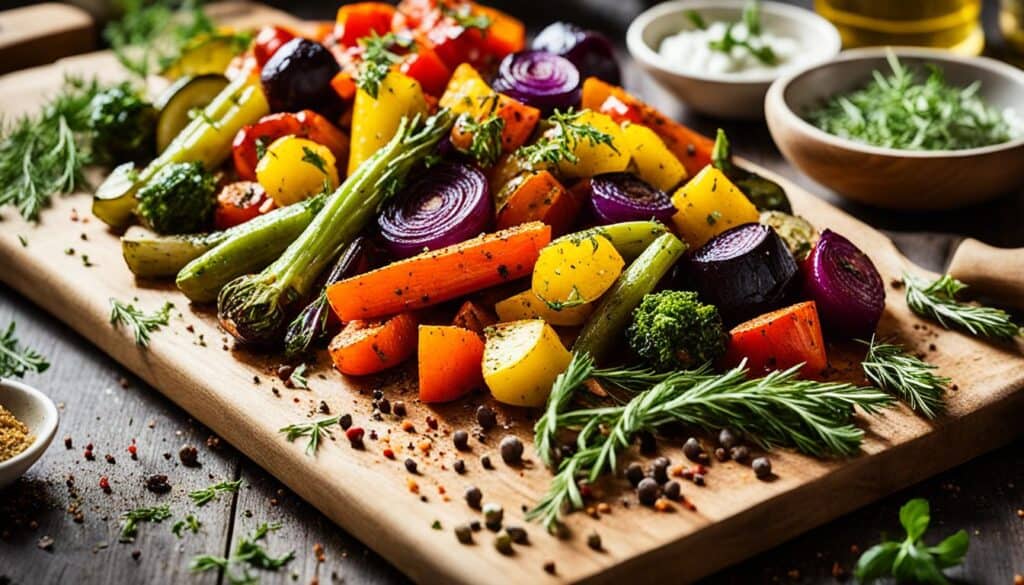
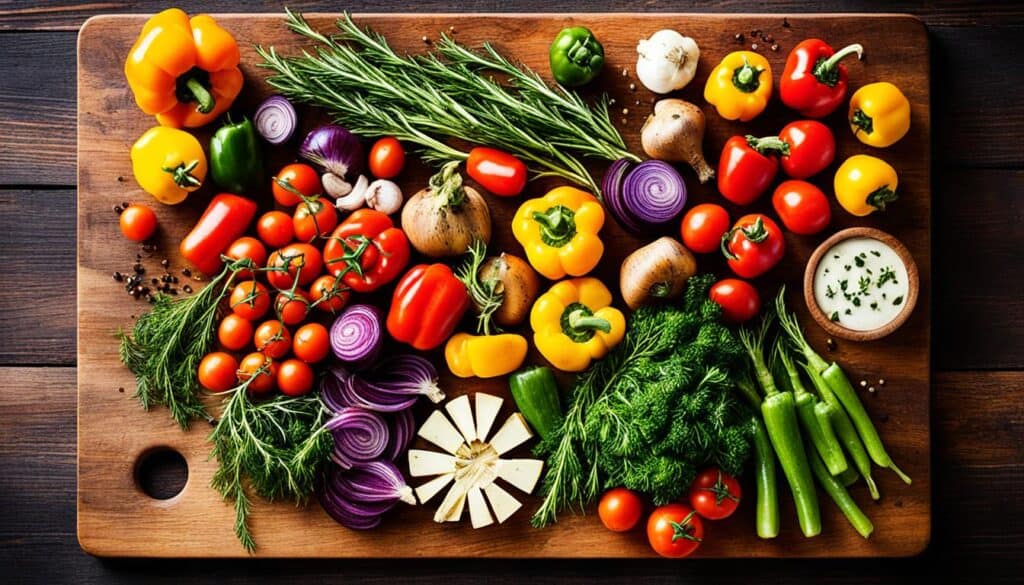
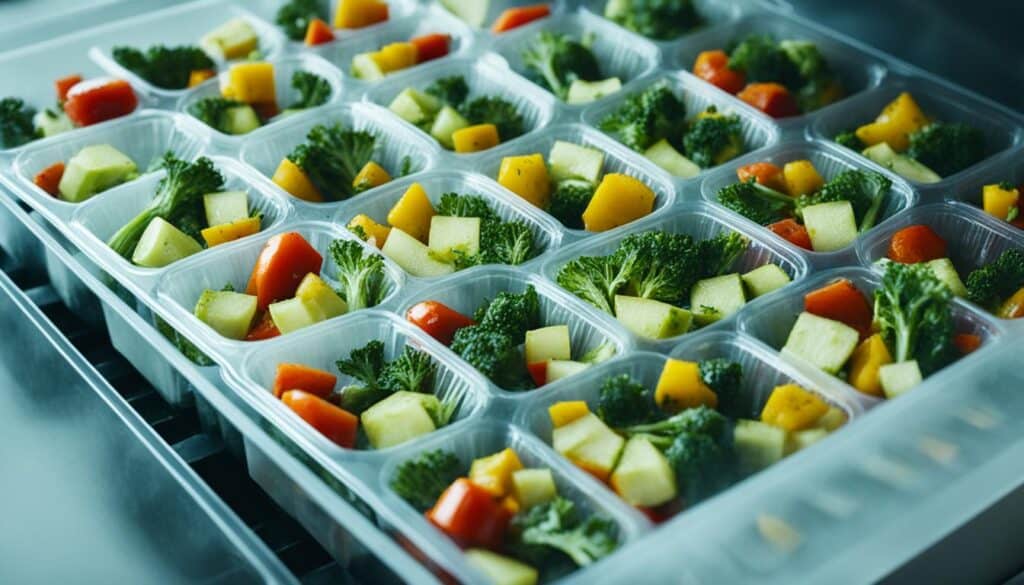



Leave a Reply